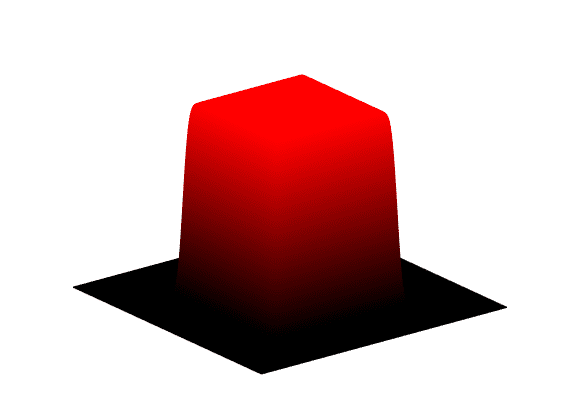A Flat Top laser beam can be described as a zone in which the irradiance, or radiance, is constant, quickly followed by a sharp fall to zero level at the edges of the zone. Thus, the energy of the Flat Top laser, when it comes to a focus, is said to be confined to a specific area.
This radiative behavior is optimal for almost all industrial processes involving a laser. For instance, a surgeon using a laser to treat human tissue needs to limit the affected area as much as possible. The same applies to materials processing with lasers where cost saving is paramount.
Unfortunately, almost all lasers emit a beam with an angular pattern that resembles a Gaussian. This Gaussian profile is characterized by a smooth peak in the center followed by a slow decline that, in theory, never reaches the zero level. Thus, laser Gaussian beams are said to be unbounded so a finite amount of light energy can always creep into the areas surrounding the main spot.
Laser beam delivery systems need to overcome this limitation and one of the paths is to convert the Gaussian beam to a Flat Top beam. To achieve this, a Flat Top laser beam shaper can be used.
Types of Flat Top Laser Beam Shapers
There are two main types of Flat Top laser beam shapers; one is referred to as an Analytical beam shaper and the other is a diffuser beam shaper.
The Analytical beam shaper can be based on a diffractive optical element that consists of a single element that alters the incoming wavefront of the beam.
This local wavefront beam modulation causes the beam to diffract in a predefined manner such that after propagating a certain distance, the beam’s overall shape is changed from a Gaussian beam to a Flat Top beam.
The structure of the diffractive optical element, DOE, is computer-designed by a specialized algorithm. The pattern obtained in this way is then produced using lithographic techniques and etched into the material.
An important feature of the DOE process is that the Flat Top beam shaper can be used to obtain any desired shape for the beam. For instance, it can be circular, rectangular, or any other shape. Sharp borders at the edges of the beam are what is common to all Flat Top beams.
The Analytical beam shaper is meant to work with highly coherent beams that are better described as a TEM00 Gaussian mode. If the input beam is deemed to be a multi-mode Gaussian mode, then a diffuser beam shaper would be a better alternative.






